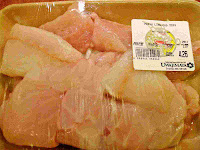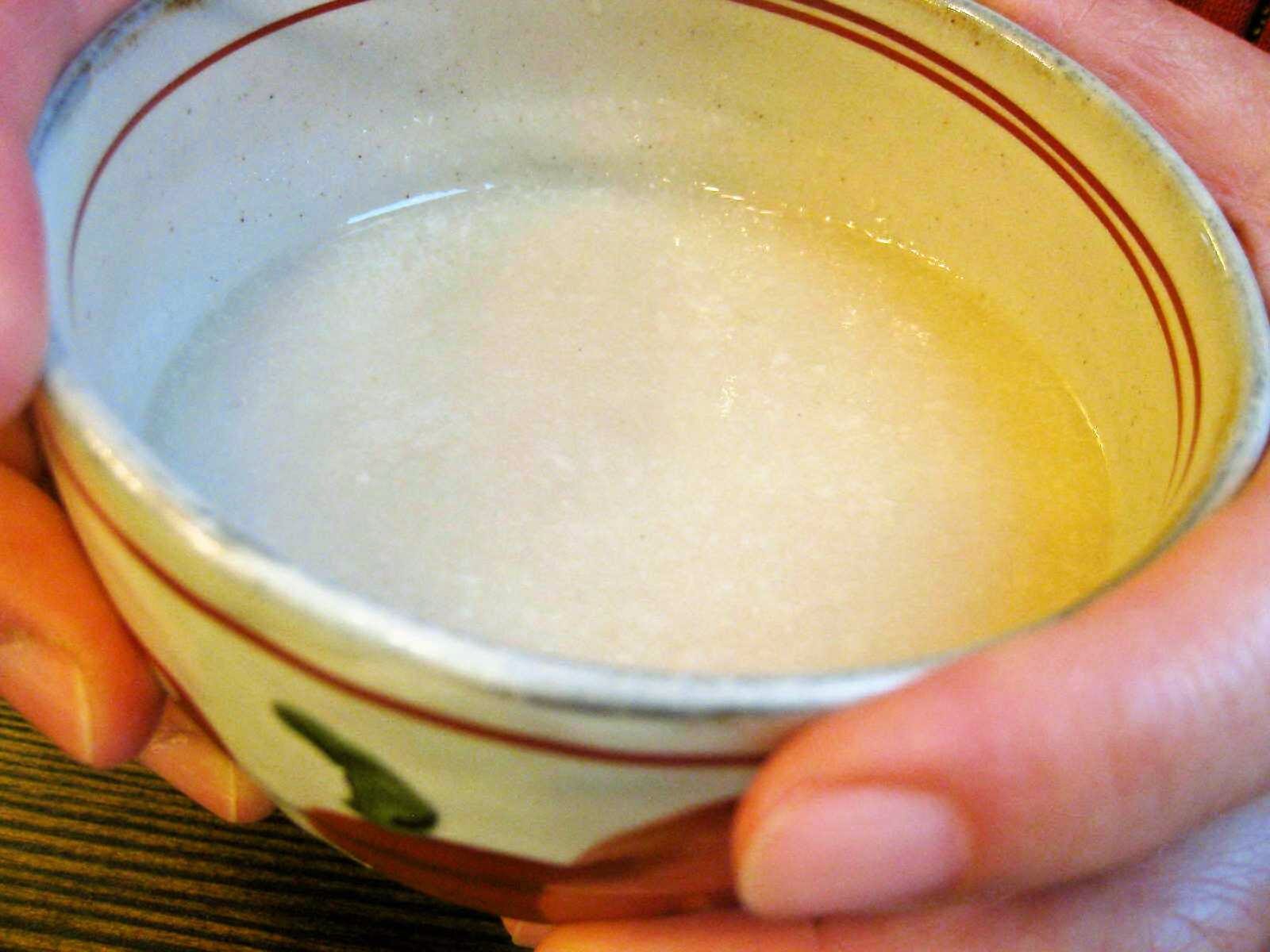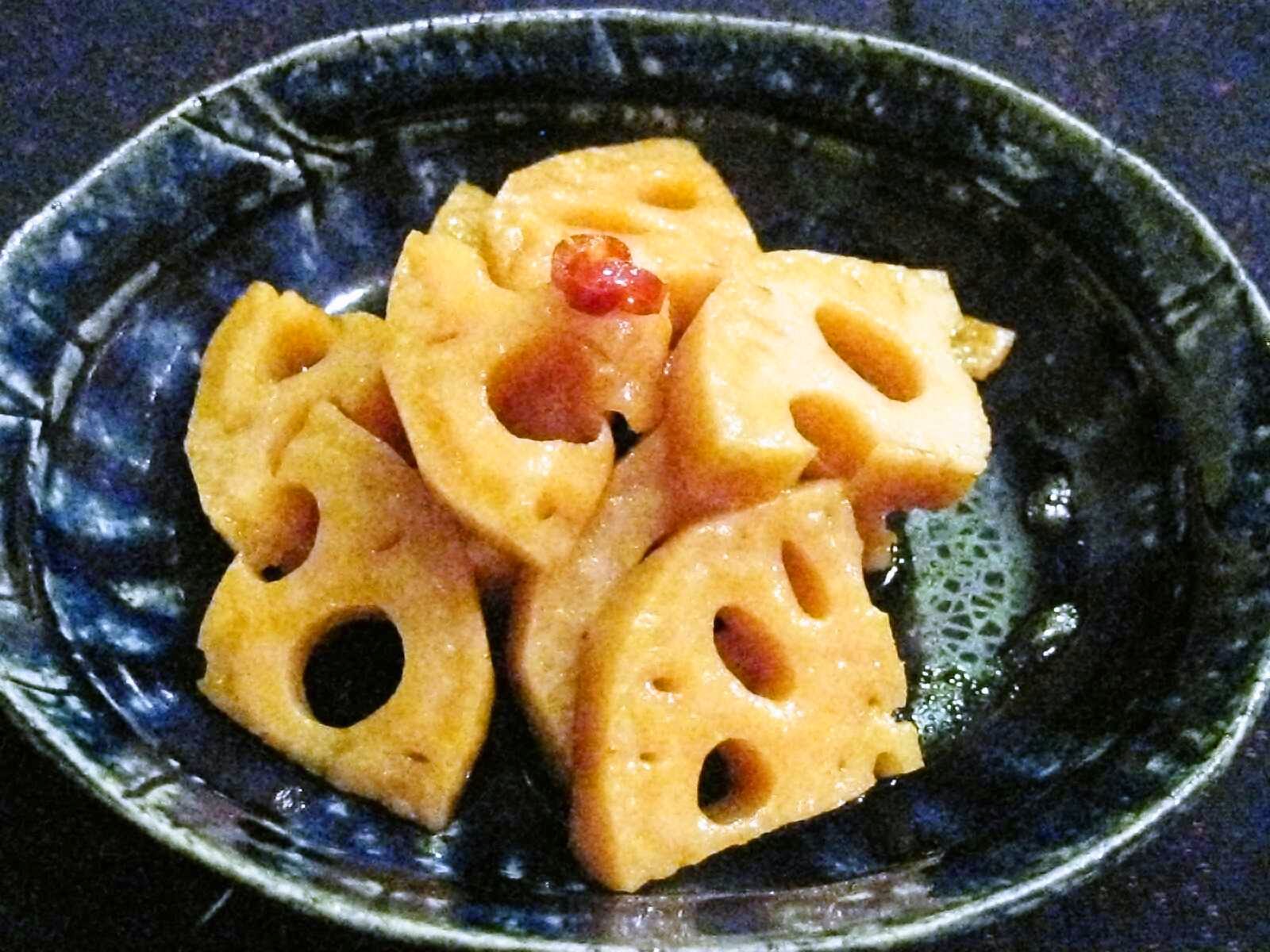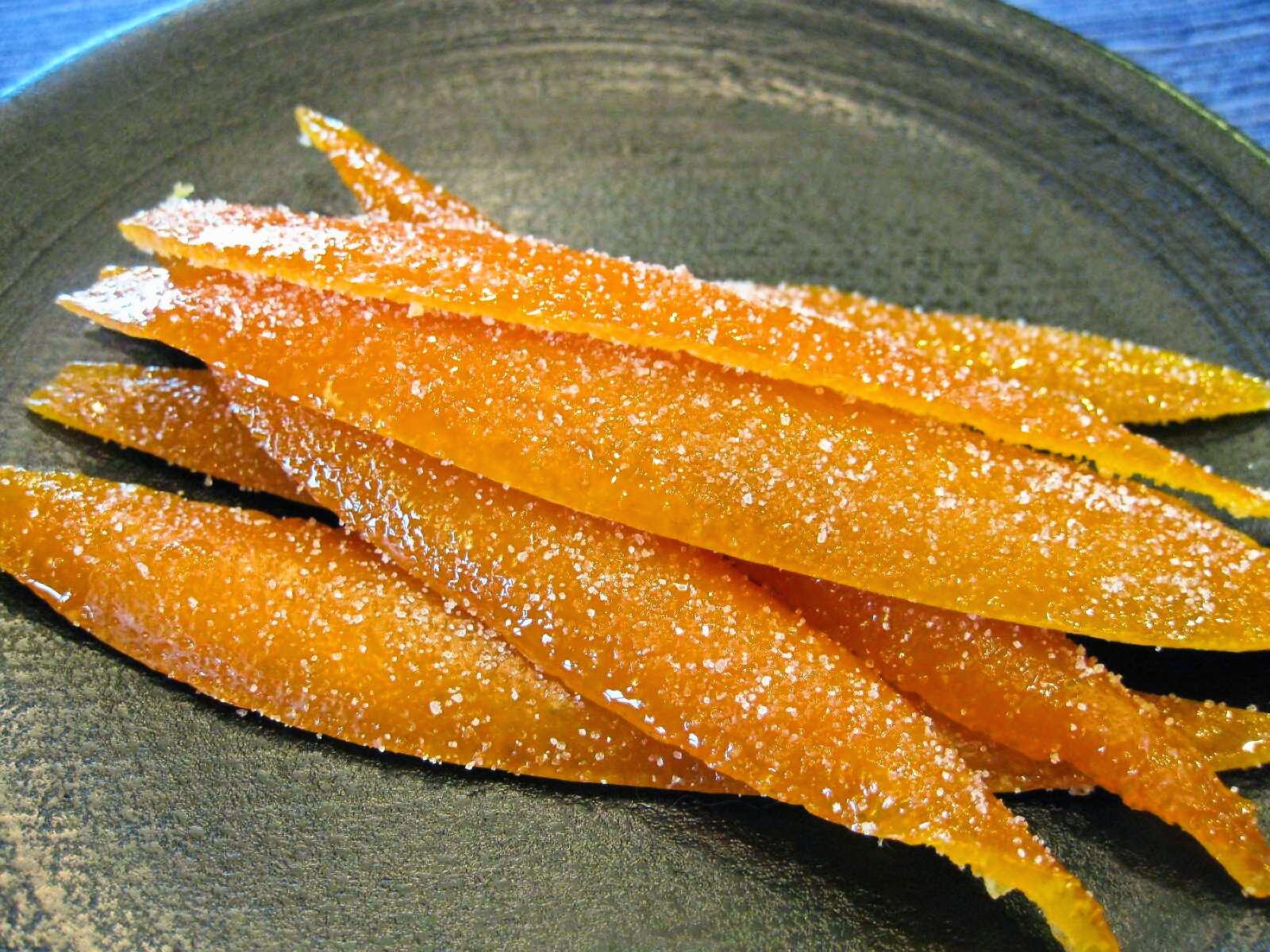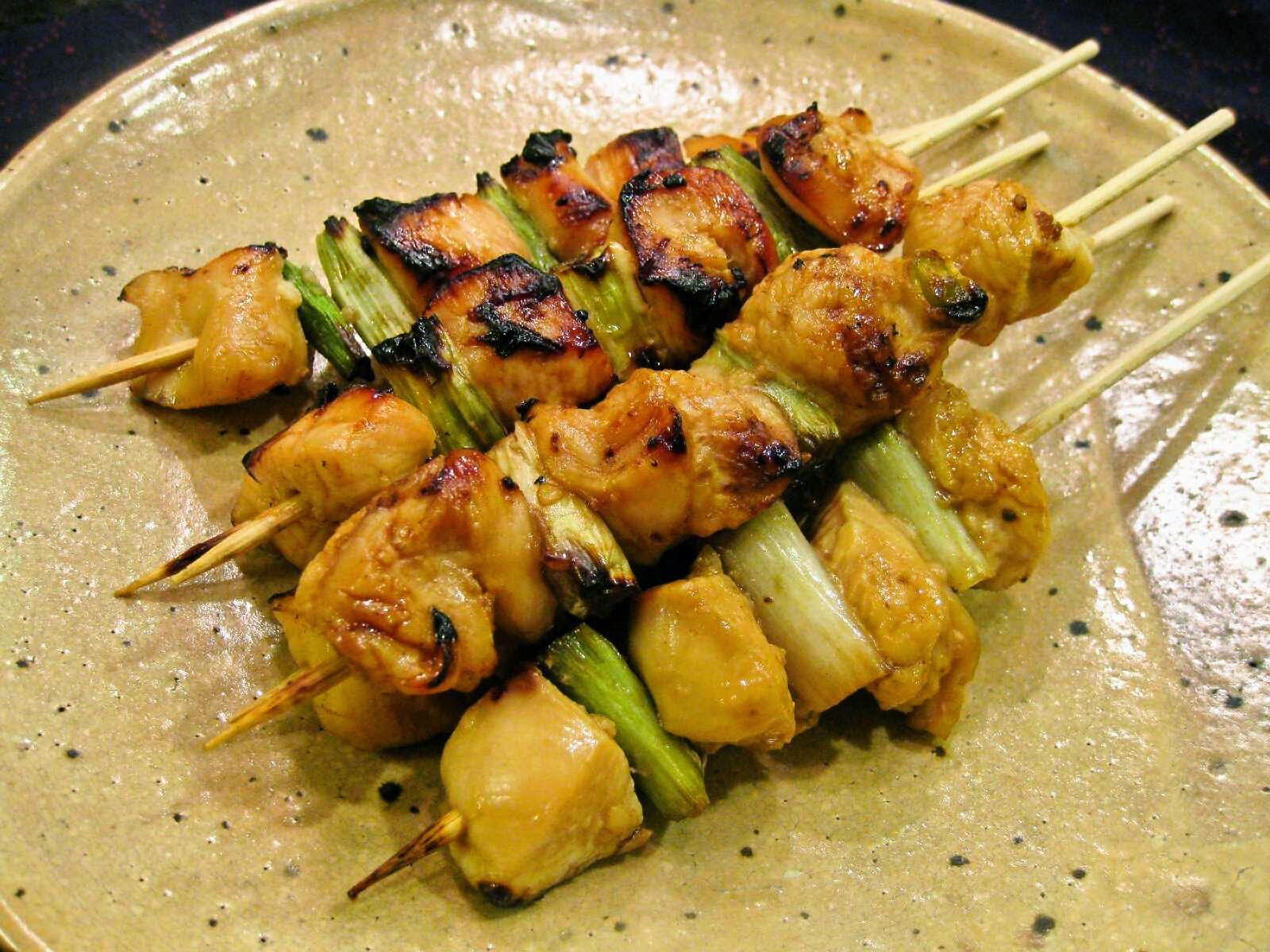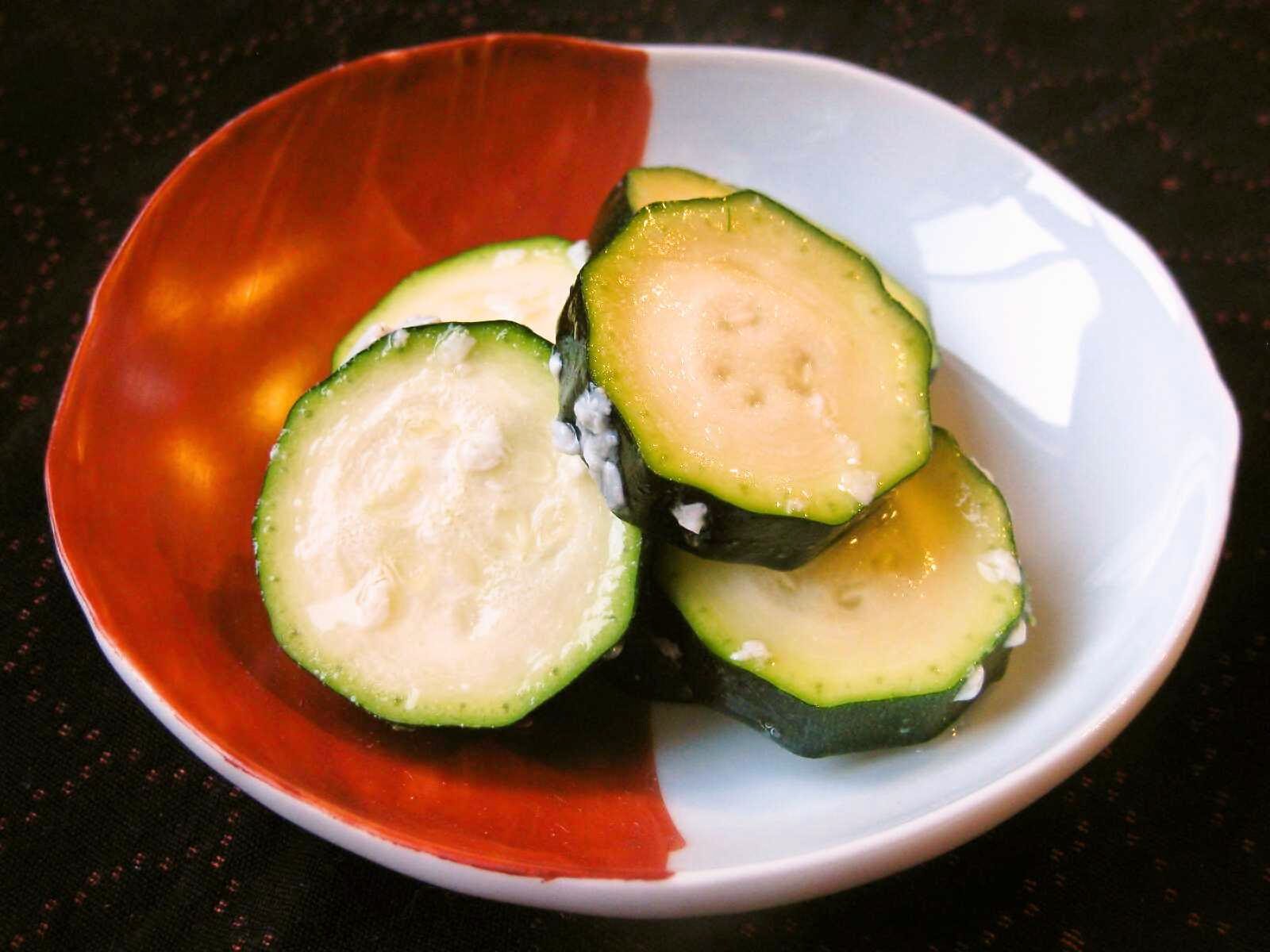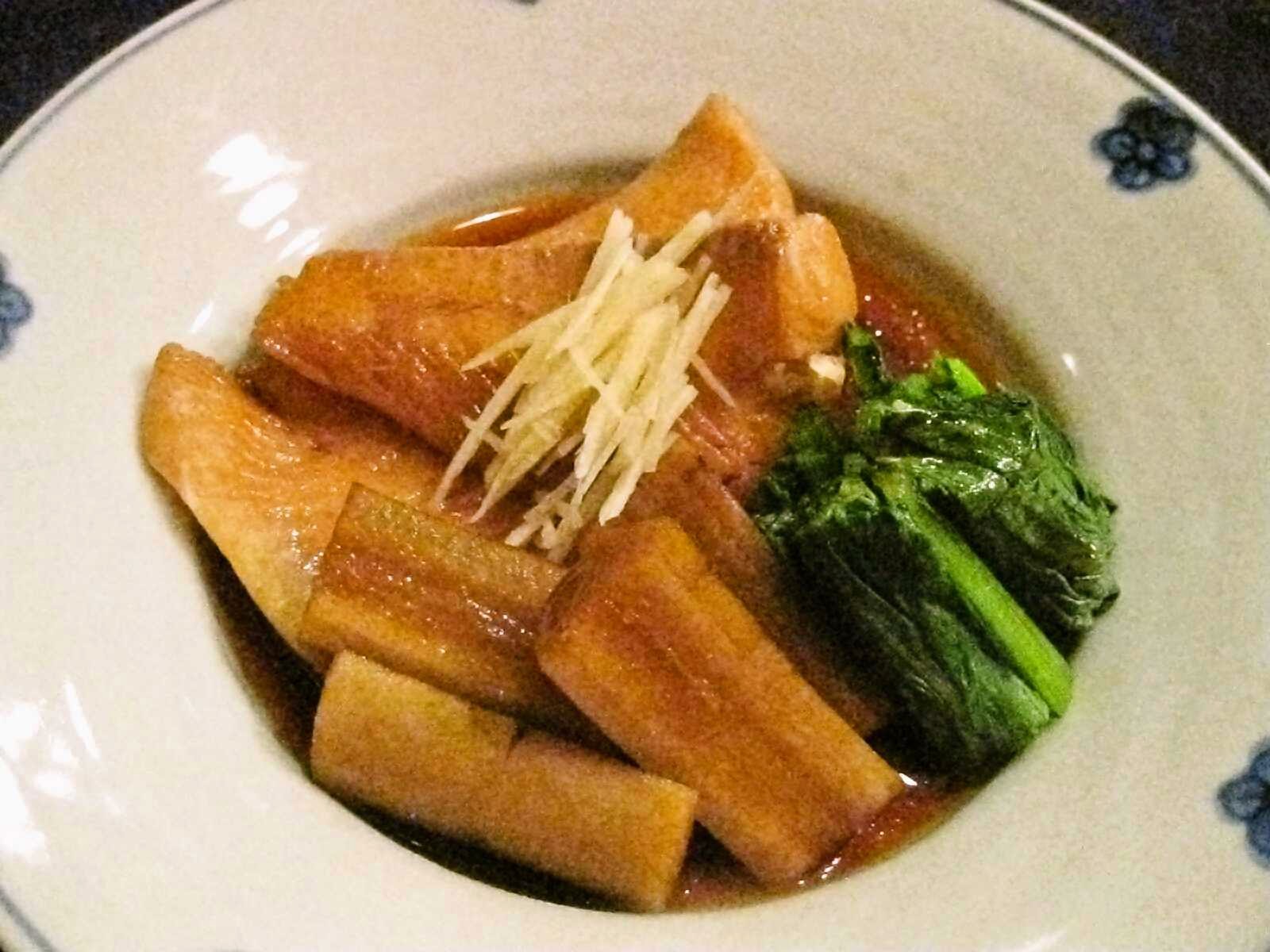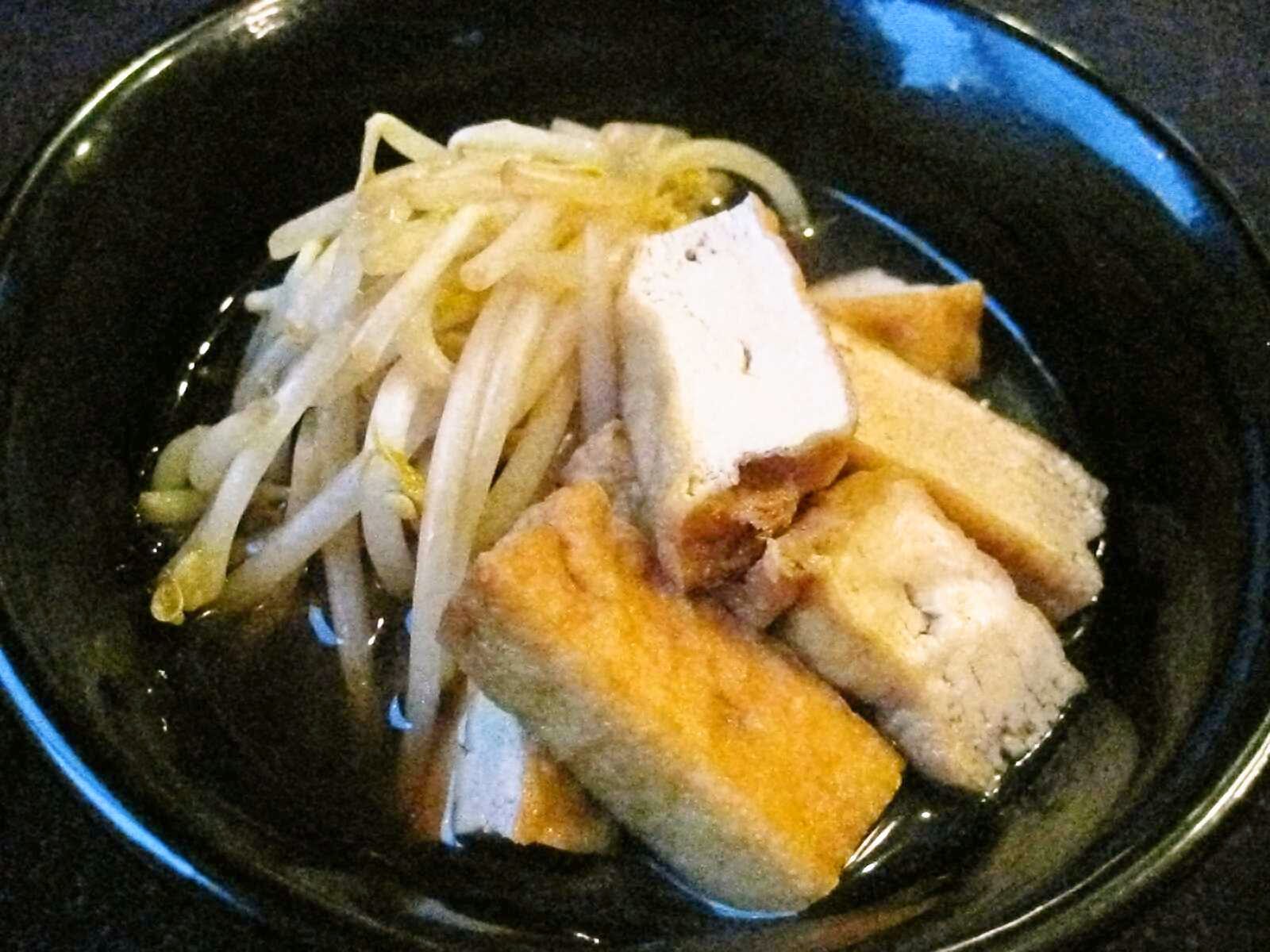All recipes are for 2 servings unless noted. Oil is canola oil and salt is kosher salt.
2013-02-28
Sakura gohan / steamed rice with salted cherry blossoms
Enjoy the soft, tangy taste and aroma of salted cherry blossoms as a harbinger of a warm, bright spring.
2013-02-26
A pound of fish
The seafood counter at Uwajimaya in Seattle attracts lots of customers and people admiring the variety of fish, and I join the crowd several times a year. But the first place I check is one end of an open refrigerated chest for fillet fish. There is a section dedicated to fish tips, which often have lots of bones. These fish tips come straight out from behind the counter after filleting for good-looking larger pieces, meaning they are super fresh.
There are a number of dishes where you only need a tiny piece or small chunk of fish. Don’t miss the great deal offered by fish tips.
The last time we were there, I picked up two packs of fish tips – one of lingcod and one of channel rockfish. Kinki, the channel rockfish (about 1.3 lb/600 g), had lots of bones and only a small amount of flesh but was enough for two meals for us. I made my favorite aradaki with daikon radish, and we ate it the same day as purchased and again the next day.
There are a number of dishes where you only need a tiny piece or small chunk of fish. Don’t miss the great deal offered by fish tips.
The last time we were there, I picked up two packs of fish tips – one of lingcod and one of channel rockfish. Kinki, the channel rockfish (about 1.3 lb/600 g), had lots of bones and only a small amount of flesh but was enough for two meals for us. I made my favorite aradaki with daikon radish, and we ate it the same day as purchased and again the next day.
2013-02-25
Kani to satoimo, horenso no nagaimo soosu guratan / crab, baby taro root and spinach gratin with Chinese yam sauce
A Japanese-style gratin with Chinese yam sauce flavored with white miso and soy sauce. It is much lighter and gentler than a bechamel sauce and cheese gratin. For this gratin, crab is paired with baby taro root -- yet another classic combination in Japanese cuisine -- to make a substantial dish. A bed of sauteed spinach adds additional flavor that also goes well with crab.
2013-02-23
Amazake no moto, amazake / amazake base & drink
A strikingly sweet wonder drink made of rice malt.
While today this opaque, white drink is more strongly associated with winter, especially with the New Year's holiday and Hinamatsuri Doll (Girls' Day) Festival on March 3, it used to be a health tonic in summer. Typically served hot in winter and cold in summer, often with ginger juice, this super healthy tonic contains nine essential amino acids and over 100 enzymes. Rich in glucose (20%) and oligosaccharide, it also contains vitamins (B1, B2, B6, B12, pantothenic acid, inositol and biotin). Amazake has been called a “drinkable I.V.,” which shows how nutritional it is.
Amazake is mentioned in Nihonshoki,
an early 8th-century history book, and its use goes back hundreds years
before the book. This primitive drink is now easily made in a common
modern appliance – the rice cooker!
While today this opaque, white drink is more strongly associated with winter, especially with the New Year's holiday and Hinamatsuri Doll (Girls' Day) Festival on March 3, it used to be a health tonic in summer. Typically served hot in winter and cold in summer, often with ginger juice, this super healthy tonic contains nine essential amino acids and over 100 enzymes. Rich in glucose (20%) and oligosaccharide, it also contains vitamins (B1, B2, B6, B12, pantothenic acid, inositol and biotin). Amazake has been called a “drinkable I.V.,” which shows how nutritional it is.
Labels:
120+ min (2+ hrs),
2 easy,
drinks,
freezable,
ginger,
incubate,
Ingredient preparation,
koji,
mochigome,
Recipes - Japanese,
rice,
simmer,
sweet rice
2013-02-22
Renkon no nanbansu-zuke / fried lotus root marinated in spicy soy sauce vinegar
A crunchy renkon dish that is both spicy and sour. Make this a day in advance to enjoy its full flavor.
Labels:
1 very easy,
10 min,
bento,
make ahead,
marinate,
picnic,
Recipes - Japanese,
renkon,
saute,
vegetables
2013-02-21
Kani no iimushi / steamed sweet rice and crab with light soy-sauce flavored dashi sauce
Dig into the sweet rice and enjoy the blended taste of crab and slightly salty gin-an sauce.
A recent “wow” dish for me.
A recent “wow” dish for me.
Labels:
3 moderate,
60 min,
blanch,
crab,
mochigome,
nanohana,
Recipes - Japanese,
rice,
seafood,
steam,
sweet rice,
vegetables,
yu choy sum
2013-02-20
Hakusai napa cabbage
Brassica rapa var. pekinensis
2013-02-19
2013-02-18
Hakusai to radisshu no gomaabura-ae / napa cabbage and radish with sesame oil
Labels:
1 very easy,
30 min,
hakusai,
no cook,
radish,
Recipes - Japanese,
vegetables
2013-02-17
Almond orange honeycomb cigars
Thin crunchy cookies that remind of the top candy layer of florentins. The rolled shape makes them easy to take somewhere or send as a gift. This is an adaptation of a recipe by Rumi Kojima, a pâtissière.
Labels:
2 easy,
30 min,
almonds,
bake,
citrus,
cookies,
desserts,
gifts,
honey,
make ahead,
orange,
orange peel,
orange zest,
Recipes - Western,
snack
Orenji piiru / candied orange peel
Far less sweet than store-bought candied orange peel but still sweet enough to use with cookies and cakes, which usually are already loaded with sugar.
2013-02-16
Negima / grilled chicken with green onion on skewers
A common yakitori grilled chicken variation with negi green onion. Great either with salt or tare sauce.
Labels:
2 easy,
30 min,
chicken,
green onions,
grill,
marinate,
party,
Recipes - Japanese,
shiokoji
2013-02-15
Yosenabe / hot pot with assorted ingredients
A very light yet satisfying nabe hot pot served with ponzujoyu citrus-flavored soy sauce. One of the first dishes that comes to our minds when finding fresh fish in winter. Add lots of vegetables to make the broth soft yet deep.
2013-02-14
2013-02-13
Zukkiini no shiokoji-zuke / zucchini marinated in salted rice malt
Similar to asazuke overnight pickles, but much simpler. The zucchini starts to take on the full flavor of shiokoji -- mildly salty yet mellow -- from the third day as the raw taste of squash softens.
Labels:
1 very easy,
10 min,
bento,
make ahead,
no cook,
pickles,
picnic,
Recipes - Japanese,
shiokoji,
vegetables,
zucchini
2013-02-12
Kaki to eringi no oisutaasoosu itame / oyster and king oyster mushroom saute with oyster sauce
A tasty triple oyster dish! The rich, deep taste of oyster sauce is a natural with oysters, while the chewy texture of eringi mushrooms stands out. Great with drinks or plain rice.
Labels:
10 min,
2 easy,
eringi,
oysters,
Recipes - Chinese,
Recipes - Japanese,
saute,
seafood
2013-02-09
Kaminaridofu / fried tofu with soy sauce
The crispy surface of tofu together with the flavor of slightly burnt soy sauce tastes great. Add katsuobushi bonito flakes for more flavor and aroma.
Labels:
1 very easy,
10 min,
green onions,
katsuobushi,
Recipes - Japanese,
saute,
tofu
2013-02-08
Moyashi to kamaboko, burokkorii no kuki nibitashi / bean sprouts, fishcake and broccoli stems simmered in light broth
Make this and see if others can tell what the light green vegetable is. Juicy and crisp like asparagus, broccoli stems are great in any dish. With the addition of moyashi bean sprouts, this nibitashi has a pleasant texture you can sink your teeth into. As with other moyashi dishes, this also takes just a few minutes once you start cooking. Quick, easy, and tasty.
Labels:
1 very easy,
10 min,
bean sprouts,
broccoli,
fishcake,
kamaboko,
moyashi,
Recipes - Japanese,
sasakama,
saute,
simmer,
vegetables
2013-02-07
Chirimushi / steamed fish, tofu, vegetables and mushrooms, with citrus-flavored soy sauce
A very light main dish with white fish, tofu and vegetables served with ponzujoyu citrus-flavored soy sauce. Great when you want something gentle that has a refreshing taste.
2013-02-06
Ponzujoyu / citrus-flavored soy sauce (quick version)
Homemade ponzujoyu (ponzu shoyu) can be as simple as mixing soy sauce, rice vinegar and citrus juice. Using a few kinds of citrus juice significantly improves the flavor.
18 calories per 2 tbsp (1/6 of recipe); 1.3 g protein; 0 g fat; 2.8 g carbohydrate; 2.8 g net carbs; 461 mg sodium (with 50% reduced-sodium soy sauce; 917 mg with regular soy sauce); 0 mg cholesterol; 0 g fiber
18 calories per 2 tbsp (1/6 of recipe); 1.3 g protein; 0 g fat; 2.8 g carbohydrate; 2.8 g net carbs; 461 mg sodium (with 50% reduced-sodium soy sauce; 917 mg with regular soy sauce); 0 mg cholesterol; 0 g fiber
2013-02-05
2013-02-03
Karei no nitsuke / sole simmered in reduced broth
A typical dish for many families, and perhaps the top dish in my mom's fish repertoire. Great as part of a meal and with sake.
174 calories (1/2 of recipe); 23.5 g protein; 1.4 g fat; 13.2 g carbohydrate; 10.0 g net carbs; 444 mg sodium (with 50% reduced-sodium soy sauce; 786 mg with regular soy sauce); 52 mg cholesterol; 3.2 g fiber (see Notes on sodium figures)
174 calories (1/2 of recipe); 23.5 g protein; 1.4 g fat; 13.2 g carbohydrate; 10.0 g net carbs; 444 mg sodium (with 50% reduced-sodium soy sauce; 786 mg with regular soy sauce); 52 mg cholesterol; 3.2 g fiber (see Notes on sodium figures)
Labels:
2 easy,
30 min,
fish,
ginger,
gobo,
Recipes - Japanese,
seafood,
shimofuri,
simmer,
sole,
vegetables
2013-02-02
Moyashi to atsuage no nibitashi / bean sprouts and deep-fried tofu in broth
Labels:
2 easy,
30 min,
atsuage,
bean sprouts,
moyashi,
Recipes - Japanese,
simmer,
vegetables
2013-02-01
Kani, shungiku, yurine no kakiage / mixed tempura with crabmeat, garland chrysanthemum and lily bulb
Crab and shungiku chrysanthemum are a classic combination, as are crab and yurine lily bulbs. Using both shungiku and yurine to complement the crab makes for yummy pieces of kakiage. Dip them in warm tentsuyu, and savor the outstanding aroma, flavor and texture.
Labels:
3 moderate,
30 min,
crab,
deep-fry,
eggs,
Recipes - Japanese,
seafood,
shungiku,
tempura,
vegetables,
yurine
Subscribe to:
Posts (Atom)

